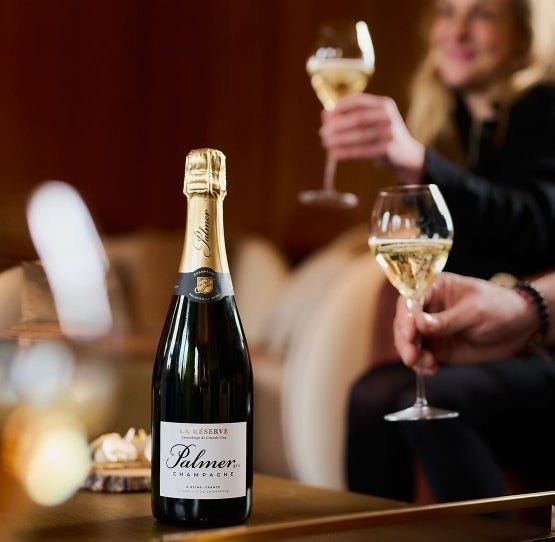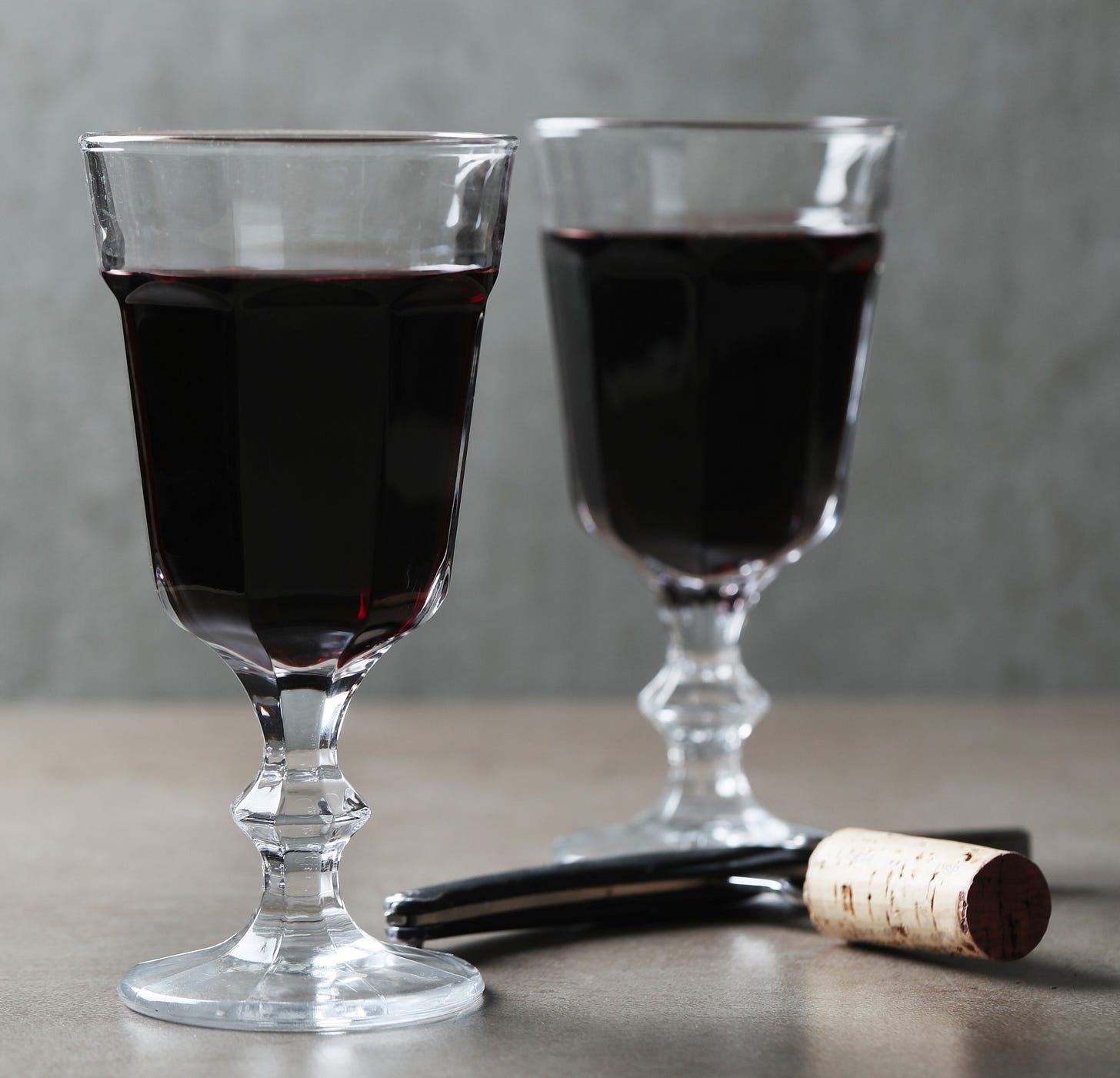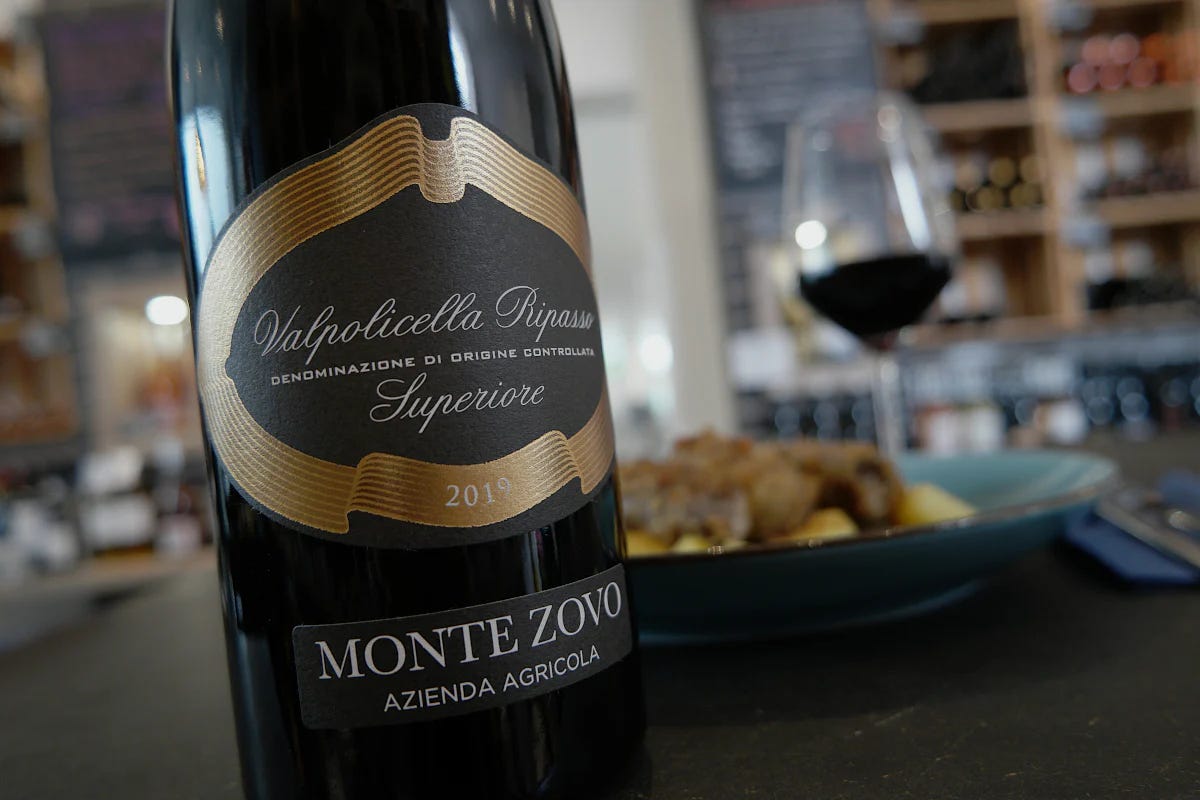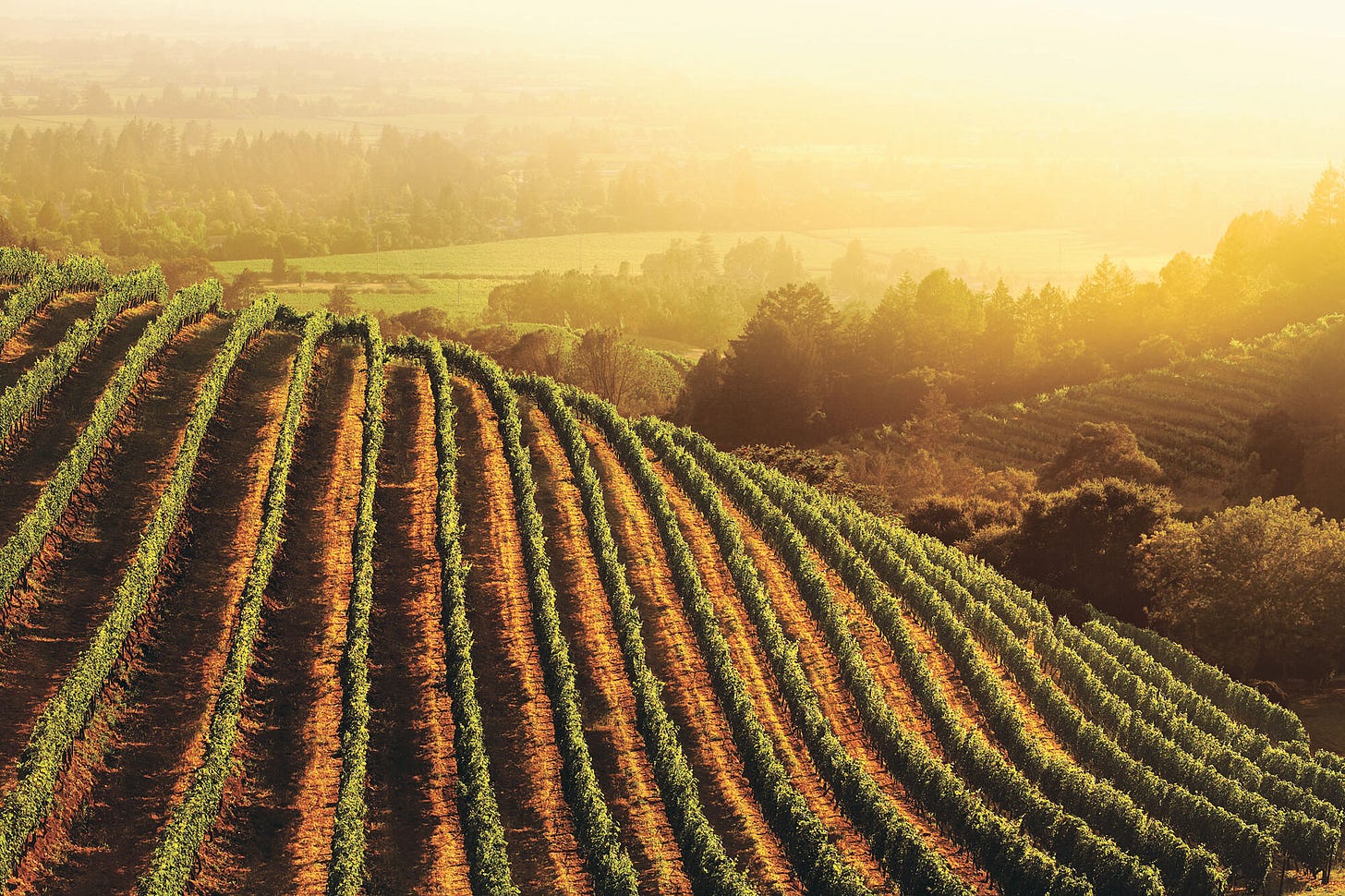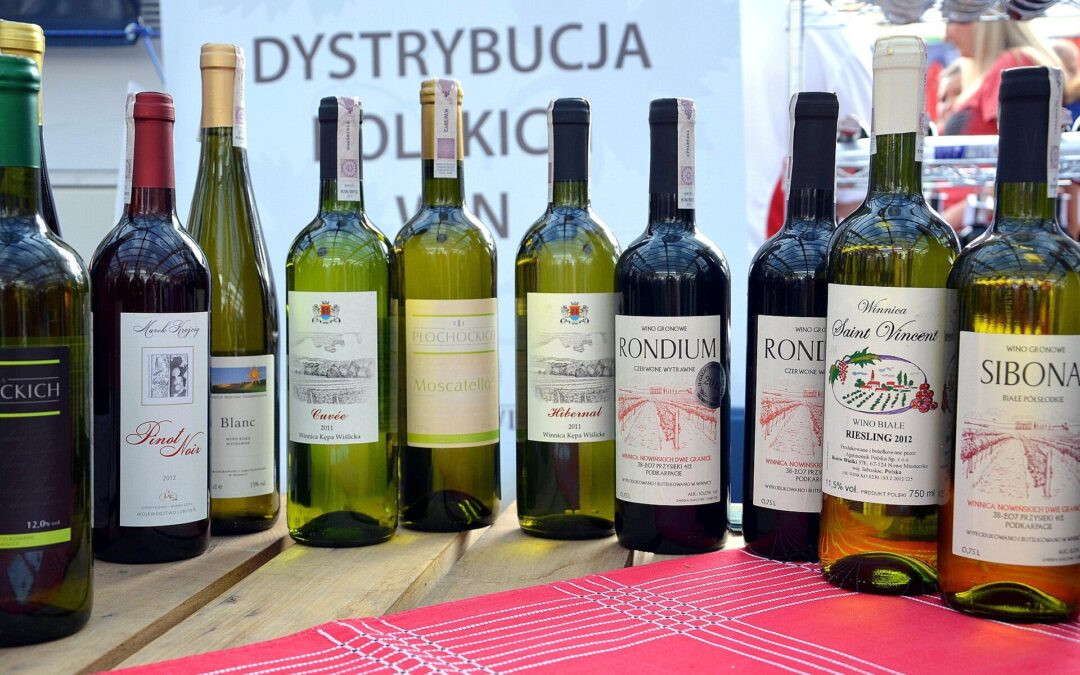
by Ross Kingsley | Jun 1, 2025 | WINES: UNCORKING THE MYSTERY
Seriously, wines from Poland? And yet, on closer look it turns out to be a story that stretches back centuries. A story of resilience and rebuilding, much like the story of the country itself.
Ancient Vines, Monastic Wines
Poland’s relationship with wine isn’t a modern experiment. It’s literally prehistoric. Fossilized grape seeds found in the Wieliczka salt mines outside Kraków tell us that wild vines grew here millions of years ago, long before humans ever thought about fermentation.
Fast forward to the 9th and 10th centuries: vineyards start appearing around Wawel Hill in Kraków. Monks, mostly Benedictines and Cistercians, tended these early vines, making wine for religious ceremonies — and maybe a little extra for themselves. Wine was essential to liturgy, and importing it from the warmer south wasn’t exactly easy or cheap. The monks had to figure it out themselves, and slowly, a local winemaking tradition took root.
By the Middle Ages, wine was a familiar presence across parts of Poland. Vineyards sprawled across hillsides, and wine flowed into the growing cities and monasteries. For a while, it looked like Poland might become a northern stronghold of European wine.
Ice, War, and Political Frost
History had other plans.
Starting in the 17th century, a colder climate (the so-called Little Ice Age) made growing grapes a lot tougher. At the same time, Poland faced wars, partitions, and instability that shook its economy to the core. Vineyards were abandoned. Winemaking knowledge faded.
Then came the 20th century, and with it, two World Wars and decades of communist rule. Under the Soviet-style system, private winemaking wasn’t encouraged — if anything, it was seen as suspiciously bourgeois. Poland’s wine tradition wasn’t just neglected; it was all but buried.
By the time communism fell in 1989, Polish wine was little more than a folk memory, kept alive by a few stubborn families making fruit wines at home.
A New Generation, A New Chapter
That could have been the end of the story. But it wasn’t.
In the 1990s, a new generation of winemakers started poking around the old hillsides again. Some had traveled to France or Austria and returned with ideas — and vines. Others simply wanted to reconnect with something Poland had lost.
It wasn’t easy. Winters could still be brutal. Vines had to be carefully chosen, frost-resistant and disease-hardy. In the early days, hybrids like Seyval Blanc and Regent dominated because they could survive the cold.
But winemakers kept pushing. They learned how to coax grapes through Poland’s short growing season. They experimented with better clones, smarter vineyard techniques, and more traditional grape varieties. Today, Poland’s vineyards are alive with Solaris, Johanniter, Pinot Noir, Zweigelt, Chardonnay, and even a bit of Sauvignon Blanc — alongside the sturdy hybrids that got them started.
Where the Vines Grow
If you go looking for Polish wine country, you’ll find it scattered across the map, often in places you wouldn’t expect.
-
Around Zielona Góra in Lubuskie, wine festivals celebrate a region that’s proud of its long — and now revived — connection to wine.
-
Down south near Kraków, in Małopolska and the Carpathian foothills, tiny family wineries dot the landscape.
-
In Lower Silesia, near Wrocław, slightly warmer weather makes it a promising zone for Pinot Noir and Chardonnay.
-
Podkarpacie and the Świętokrzyskie Mountains are newer players but full of energy, enthusiasm, and some excellent soil.
Most of these vineyards are small. Boutique. Hands-on. You’re more likely to meet the winemaker at the tasting room than a polished sommelier. Sustainability and organic farming aren’t marketing buzzwords here — they’re often just how things are done.
What Polish Wine Tastes Like
If you like bright, fresh, food-friendly wines, you’re in luck. Polish whites — especially from Solaris and Johanniter — tend to be zippy, aromatic, and mouthwatering. Think along the lines of a good German Riesling or Austrian Grüner Veltliner, but with a little more rustic charm.
The reds are trickier. Pinot Noir here can be lovely — light, earthy, and delicate — but it takes skill and a good vintage. Cold-hardy grapes like Regent and Rondo produce juicier, darker wines, though sometimes they can still show a bit of that hybrid tang.
Poland’s fruit wines are also worth mentioning. Apple, cherry, blackcurrant — it’s not just nostalgia. Some producers treat fruit wine with the same seriousness and craft as grape wine, creating complex, grown-up bottles that defy stereotypes.
How Polish Wines Stack Up
Polish wines aren’t trying to imitate Bordeaux or Burgundy. That’s part of their charm. Instead, they’re carving out a space in the international scene with an honest cool-climate style.
At blind tastings and competitions like the Decanter World Wine Awards, Polish wines have started picking up medals. Critics are noticing the precision, the bright acidity, and the clean, confident winemaking. No, you won’t find $300 cult bottles here — but you might find a $25 white wine that makes you rethink everything you thought you knew about Eastern Europe.
Looking Ahead
Poland’s wine industry is still small, still fragile. But it’s moving forward — slowly, thoughtfully, and with a lot of heart.
As climate patterns shift and northern latitudes become more hospitable to fine wine, Poland’s potential only grows. And as more winemakers experiment, innovate, and reconnect with their ancient roots, Polish wine is no longer just a curiosity.
It’s becoming something worth seeking out — not just because it’s surprising, but because it’s good.
Image Credit: https://wikipedia.org
_ _ _
© CHURRASCO PHUKET STEAKHOUSE / ALL RIGHTS RESERVED
Reprinting, reposting & sharing allowed, in exchange for a backlink and credits
Churrasco Phuket Steakhouse serves affordable Wagyu and Black Angus steaks and burgers. We are open daily from 12noon to 11pm at Jungceylon Shopping Center in Patong / Phuket.
We are family-friendly and offer free parking and Wi-Fi for guests. See our menus, reserve your table, find our location, and check all guest reviews here:
https://ChurrascoPhuket.com/
#Churrascophuket #jungceylon #phuketsteakhouse #affordablewagyu #wagyu
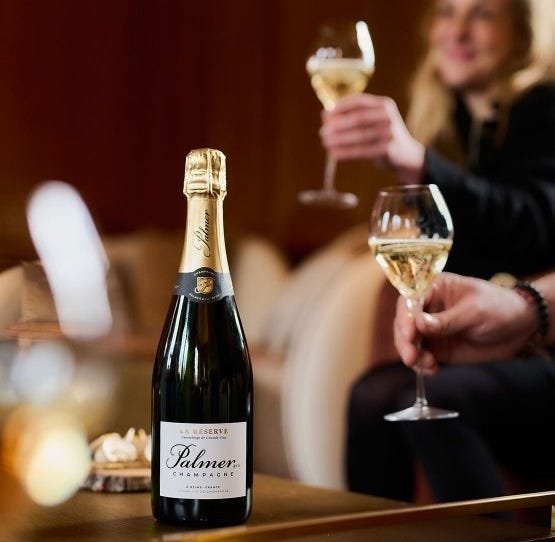
by Ross Kingsley | May 11, 2025 | WINES: UNCORKING THE MYSTERY
When most people think of Champagne, they envision effervescent flutes, celebratory toasts, and luxurious indulgence. But behind the iconic bubbles lies a blend of artistry and agriculture—particularly, a selection of specific grape varieties that shape the flavor, structure, and style of every bottle. Despite the fame of the name, many are surprised to learn that only a small number of grape types are legally permitted in the production of true Champagne. Let’s explore their characteristics, and how they come together to define the taste of the world’s most prestigious sparkling wine.
The Big Three: Pinot Noir, Chardonnay, and Meunier
Champagne is made primarily from three grape varieties, each contributing different traits to the wine.
Pinot Noir
Making up about 38% of vineyard plantings in Champagne, Pinot Noir is the backbone of many cuvées. It brings body, structure, and a complex red fruit character—think cherry, raspberry, and sometimes subtle spice. Though it’s a black grape, it’s often used to make white sparkling wine because the juice is pressed gently, avoiding color extraction from the skins. In Blanc de Noirs Champagnes (white Champagne made from black grapes), Pinot Noir is usually the dominant or sole variety.
Chardonnay
Representing roughly 30% of plantings, Chardonnay adds finesse and longevity. Known for its bright acidity and floral, citrus-driven aromatics, Chardonnay is essential for creating elegant, age-worthy Champagnes. It is the exclusive grape in Blanc de Blancs Champagnes, prized for their purity, minerality, and crisp finish. Chardonnay thrives particularly well in the Côte des Blancs, a subregion south of Épernay known for chalky soils that enhance the grape’s elegance.
Meunier (formerly Pinot Meunier)
Often underestimated, Meunier accounts for about 32% of Champagne vineyards. It ripens earlier and is more resistant to frost, making it a vital component in the region’s climate. Meunier contributes fruitiness, roundness, and a youthful charm to blends. While traditionally viewed as a supporting grape, it’s now gaining recognition in its own right, with some producers crafting 100% Meunier Champagnes that showcase its generous character.
Other Permitted Grapes: Rare but Real
In addition to the main trio, the Champagne AOC regulations allow four other grape varieties—though they collectively account for less than 0.3% of vineyard area. These historical varieties are:
-
Pinot Blanc
-
Pinot Gris
-
Petit Meslier
-
Arbane
These grapes were more commonly grown in centuries past, but today they are used mostly by a handful of producers seeking to revive forgotten traditions or craft niche cuvées. They can add unique floral, herbal, or apple-like qualities, and are sometimes blended into “heritage” Champagnes for complexity.
Blending as an Art Form
Unlike most still wines, Champagne is usually a blend—not only of grapes, but also of different vineyard plots, vintages, and reserve wines. The goal is consistency and balance. Pinot Noir provides structure, Chardonnay brings lift and precision, and Meunier adds approachability and fruit-forward charm. The exact mix depends on the house style. For example, Bollinger tends to favor Pinot Noir for its depth and richness, while Ruinart is known for its Chardonnay-driven elegance.
Why Grape Composition Matters
Understanding the grape varieties behind Champagne isn’t just wine-geek trivia—it informs your tasting experience. A Blanc de Blancs made from 100% Chardonnay will be sharper and more linear than a fuller-bodied Blanc de Noirs made from Pinot Noir and/or Meunier. A non-vintage blend from a large house might emphasize consistency and approachability, while a grower Champagne made from lesser-known grapes may lean into uniqueness and terroir expression.
Final Thoughts
Next time you pop open a bottle of Champagne, take a moment to consider the grapes that went into it. Whether it’s the refined structure of Chardonnay, the strength of Pinot Noir, or the roundness of Meunier, each grape plays a role in the complexity and celebration of Champagne. Behind every bubble lies a blend born from centuries of tradition and the nuances of the vine.
Image Credit: https://www.champagne-palmer.fr/en/
(Served at Churrasco Phuket Steakhouse)
_ _ _
© CHURRASCO PHUKET STEAKHOUSE / ALL RIGHTS RESERVED
Reprinting, reposting & sharing allowed, in exchange for a backlink and credits
Churrasco Phuket Steakhouse serves affordable Wagyu and Black Angus steaks and burgers. We are open daily from 12noon to 11pm at Jungceylon Shopping Center in Patong / Phuket.
We are family-friendly and offer free parking and Wi-Fi for guests. See our menus, reserve your table, find our location, and check all guest reviews here:
https://ChurrascoPhuket.com/
#Churrascophuket #jungceylon #phuketsteakhouse #affordablewagyu #wagyu
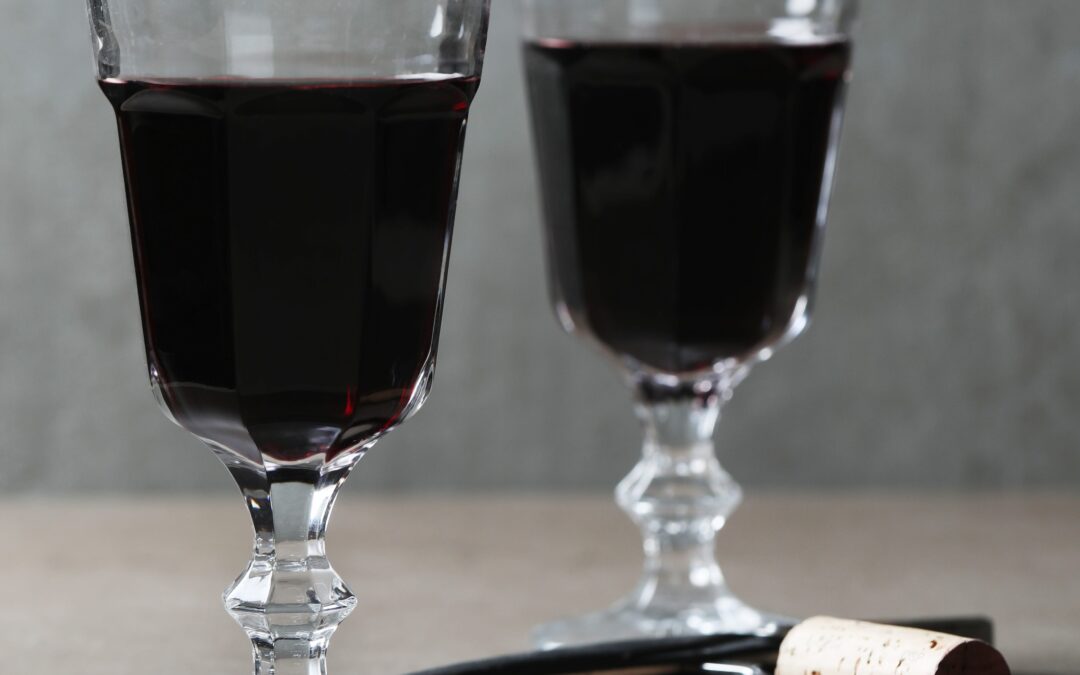
by Ross Kingsley | May 4, 2025 | WINES: UNCORKING THE MYSTERY
Portugal is renowned for its diverse and exquisite wines, with Port and Madeira standing out as two globally celebrated fortified wines. While both share Portuguese roots and a fortification process, they differ significantly in origin, production methods, flavors, and uses – making each a unique treasure in the world of wine.
Origins and Terroir
Port wine (served at Churrasco Phuket Steakhouse) originates from the Douro Valley in mainland Portugal, a UNESCO World Heritage Site known for its terraced vineyards. Madeira, on the other hand, comes from the Madeira Islands, a volcanic archipelago in the Atlantic Ocean. The distinct climates and soils of these regions heavily influence the wines’ flavors—Port reflecting the richness of inland vineyards and Madeira showcasing the mineral complexity of volcanic terrain.
Production Methods
Port is fortified by adding Aguardente (grape spirit) during fermentation, halting the process and preserving natural sugars. This creates a sweet, high-alcohol wine. Madeira’s fortification also involves adding spirit, but what sets it apart is its unique aging process. Madeira is subjected to heat and oxygen, either through the traditional estufagem method (heating in tanks) or by aging in warm attics. This deliberate exposure creates its signature caramelized and nutty flavors.
Flavor Profiles
Port wines are typically sweet and come in styles like ruby, tawny, and vintage, offering notes of ripe fruits, chocolate, and spices. Madeira, available in dry to sweet styles, delivers flavors of roasted nuts, dried fruits, and citrus, with a distinctive tangy acidity that ensures longevity.
Uses and Pairings
Port is often enjoyed as a dessert wine, pairing well with chocolates, cheeses, and nuts. Madeira’s versatility makes it suitable for cooking, sipping, or pairing with dishes like roasted meats or savory appetizers.
Both wines, steeped in history and tradition, represent the rich diversity of Portuguese winemaking, offering distinct experiences to wine lovers worldwide.
Image Credit: https://freepik.com
_ _ _
© CHURRASCO PHUKET STEAKHOUSE / ALL RIGHTS RESERVED
Churrasco Phuket Steakhouse serves affordable Wagyu and Black Angus steaks and burgers. We are open daily from 12noon to 11pm at Jungceylon Shopping Center in Patong / Phuket.
We are family-friendly and offer free parking and Wi-Fi for guests. See our menus, reserve your table, find our location, and check all reviews here:
https://ChurrascoPhuket.com/
#Churrascophuket #jungceylon #phuketsteakhouse #affordablewagyu #wagyu
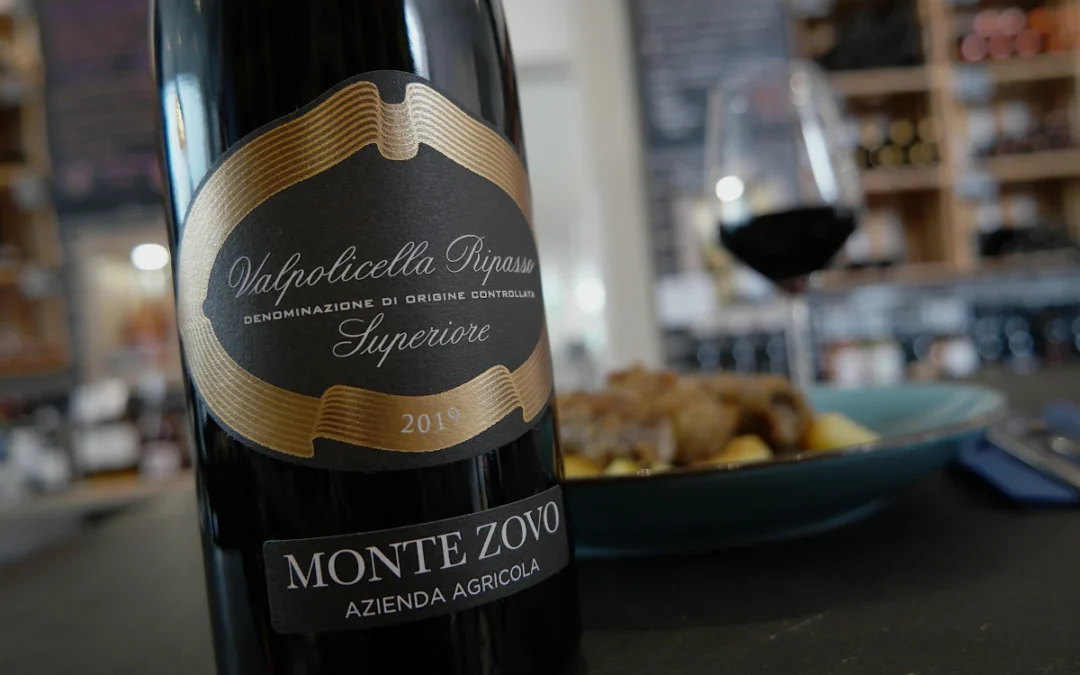
by Ross Kingsley | Apr 27, 2025 | WINES: UNCORKING THE MYSTERY
Italy’s Veneto region is renowned for its winemaking traditions, particularly the unique techniques that give us Ripasso, Appassimento, and Amarone wines. While these styles share some similarities, they differ in their production methods, flavor profiles, and intended drinking experiences.
Appassimento: The Foundation Technique
Appassimento is not a wine style but rather a winemaking method. Grapes are partially dried before fermentation, concentrating their sugars, flavors, and aromatics. This drying process, traditionally done on bamboo racks or in well-ventilated drying rooms, reduces the water content in the grapes, resulting in intensely flavored and complex wines.
This technique forms the backbone of Amarone and Recioto wines. Appassimento wines are typically bold, with notes of dried fruits, spices, and chocolate. While Amarone is the most famous expression of this method, the technique is used across Italy and beyond to produce rich, robust wines.
Amarone: Appassimento’s Masterpiece
Amarone della Valpolicella is the pinnacle of Appassimento winemaking. Made from partially dried Corvina, Rondinella, and Molinara grapes, Amarone is a dry, full-bodied wine with high alcohol content (often 15-16%). The grapes are fermented completely, leaving no residual sugar, which distinguishes it from Recioto, its sweeter cousin.
Amarone wines are known for their luxurious flavors of dried cherries, figs, dark chocolate, and spices, complemented by velvety tannins and a long finish. Amarone is often reserved for special occasions due to its price and complexity, making it a celebrated choice for wine enthusiasts.
Ripasso: Amarone’s Little Brother
Ripasso, which translates to “repassed,” is a distinct method and style. It begins as a lighter Valpolicella wine, which is then fermented a second time with the dried grape skins (pomace) left over from Amarone or Recioto production. This process infuses the wine with more body, alcohol, and flavor, bridging the gap between standard Valpolicella and the rich intensity of Amarone.
Ripasso wines offer flavors of ripe fruits, dried cherries, and subtle spices, with softer tannins and moderate alcohol levels (around 13-14%). They are often referred to as “Baby Amarones” due to their similarity in character but at a more accessible price point.
Key Differences
-
Appassimento: The drying method used to enhance grape flavors.
-
Amarone: A premium dry wine fully fermented from dried grapes.
-
Ripasso: A medium-bodied wine enhanced by second fermentation with Amarone pomace.
Together, these styles showcase the artistry of Veneto’s winemaking and offer options for every palate and occasion.
PS: Churrasco Phuket Steakhouse currently offers Monte Zovo’s Valpolicella Ripasso Superiore DOC on it’s wine list.
Image credit: https://cooksandwines.de
_ _ _
© CHURRASCO PHUKET STEAKHOUSE / ALL RIGHTS RESERVED
Churrasco Phuket Steakhouse serves affordable Wagyu and Black Angus steaks and burgers. We are open daily from 12noon to 11pm at Jungceylon Shopping Center in Patong / Phuket.
We are family-friendly and offer free parking and Wi-Fi for guests. See our menus, reserve your table, find our location, and check all reviews here:
https://ChurrascoPhuket.com/
#Churrascophuket #jungceylon #phuketsteakhouse #affordablewagyu #wagyu
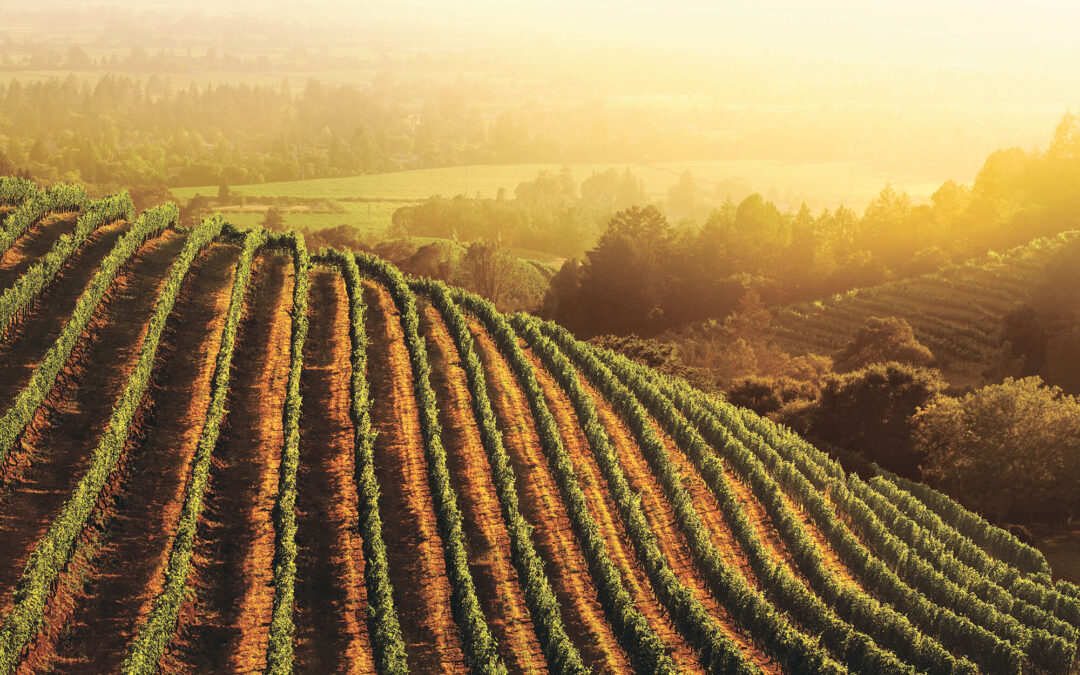
by Ross Kingsley | Apr 20, 2025 | WINES: UNCORKING THE MYSTERY
When thinking of California wine, Napa Valley instantly comes to mind. With its world-class Cabernet Sauvignon, iconic estates, and luxury tasting rooms, Napa has earned its place at the forefront of American winemaking. However, California is far more than just Napa. The state stretches across varied climates, terrains, and microclimates that nurture a remarkable range of grape varieties and styles. Beyond Napa’s spotlight lie several exceptional wine regions, each offering a distinct character and tasting experience. Here are three of California’s most compelling wine destinations that deserve your attention.
Sonoma County: Elegance Meets Earthiness
Just to the west of Napa, Sonoma County spans more than one million acres and encompasses 18 designated American Viticultural Areas (AVAs), from the foggy Russian River Valley to the sun-drenched Dry Creek Valley. With over 60,000 acres of vineyards, Sonoma’s strength lies in its diversity. Its cooler coastal areas are ideal for growing Pinot Noir and Chardonnay, producing wines known for their finesse, balance, and complexity.
The Russian River Valley, in particular, has built a global reputation for elegant Pinot Noir with bright red fruit flavors and silky textures. Sonoma Coast wines, influenced by Pacific breezes, tend to show crisp acidity and a mineral backbone. Chardonnay here often leans toward a leaner, Burgundian style.
But it’s not just about the wine. Sonoma County offers a more laid-back, rustic alternative to the polish of Napa. Many of the wineries are family-owned and committed to sustainable or organic practices. Farm-to-table cuisine, artisan cheese producers, and charming small towns like Healdsburg and Sebastopol add to the appeal. Sonoma is a place where fine wine meets authenticity and a slower pace of life.
Lodi: Zinfandel’s Spiritual Home
Situated in the heart of California’s Central Valley, Lodi has quietly become one of the most exciting wine regions in the state. Though long considered a bulk wine producer, Lodi has undergone a transformation in recent decades. Today, with over 100,000 acres of vineyards, it is best known as the “Zinfandel Capital of the World.” The region’s old vines—many over 50, even 100 years old—produce rich, concentrated wines with ripe berry fruit, spice, and remarkable depth.
Old Vine Zinfandel remains Lodi’s flagship, but the region is far from one-dimensional. Thanks to its Mediterranean climate, Lodi supports over 100 different grape varieties, from Spanish Albariño and Tempranillo to Rhône varietals and classic Bordeaux grapes like Cabernet Sauvignon and Merlot. Innovative winemakers have embraced this diversity, crafting small-batch wines that highlight lesser-known grapes and sustainable farming techniques.
Lodi stands out for its sense of community. Most wineries here are still family-owned, and the tasting rooms tend to be unpretentious, welcoming, and affordable. It’s an ideal destination for wine lovers seeking high-quality wines without the high prices or crowds.
Paso Robles: Bold Wines and Boundary-Pushing Blends
Located halfway between San Francisco and Los Angeles along the Central Coast, Paso Robles has evolved into one of California’s most dynamic wine regions. Once known primarily for rustic Zinfandels, Paso today excels in full-bodied reds—especially Cabernet Sauvignon and Rhône-style blends of Syrah, Grenache, and Mourvèdre.
Paso Robles’ diverse soils, wide diurnal temperature shifts, and warm climate make it a haven for robust, expressive wines. The region is home to more than 200 wineries, ranging from sleek tasting rooms to rustic barns. Winemakers here are known for their experimental spirit, often blending grape varieties not traditionally seen together to produce distinctive wines that reflect both innovation and terroir.
In recent years, Paso Robles has garnered acclaim not just for its wines, but for its food scene and hospitality. The area has embraced culinary tourism, with wine-country restaurants and events that celebrate local ingredients and seasonal flavors.
A Broader Taste of California
From Sonoma’s refined cool-climate varietals and Lodi’s heritage Zinfandels to Paso Robles’ bold innovation, California’s wine story is far richer than just Napa Valley. Each of these regions brings its own history, climate, and personality to the glass. Whether you’re a seasoned wine enthusiast or a casual taster, exploring beyond Napa reveals a Golden State full of vinous surprises—and some of the best wine experiences California has to offer.
Image Credit: https://en.discovercaliforniawines.ca/about-wine-institute/
_ _ _
© CHURRASCO PHUKET STEAKHOUSE / ALL RIGHTS RESERVED
Churrasco Phuket Steakhouse serves affordable Wagyu and Black Angus steaks and burgers. We are open daily from 12noon to 11pm at Jungceylon Shopping Center in Patong / Phuket.
We are family-friendly and offer free parking and WiFi for guests. See our menus, reserve your table, find our location, and check all reviews here:
Home
#churrascophuket #jungceylon #phuketsteakhouse #affordablewagyu #wagyu

by Ross Kingsley | Apr 13, 2025 | WINES: UNCORKING THE MYSTERY
A Historic Wine Region
The Maipo Valley, at times referred to as the “Bordeaux of South America,” has been at the heart of Chilean winemaking since the 16th century. Spanish conquistadors first introduced viticulture to the region, but it was the 19th-century arrival of French grape varieties that truly shaped its modern identity. Wealthy Chilean families, inspired by Bordeaux’s great wines, imported Cabernet Sauvignon, Merlot, and Carmenère, planting them in the fertile soils of Maipo. The climate and terroir proved ideal for these varieties, and soon the valley became known for producing wines with remarkable depth, structure, and elegance.
This French influence remains a cornerstone of the region’s winemaking philosophy. In fact, one of the most prestigious collaborations in Chilean wine history happened here when Baron Philippe de Rothschild, the legendary Bordeaux winemaker behind Château Mouton Rothschild, partnered with Concha y Toro to create Almaviva, one of the country’s most sought-after wines. This partnership further cemented Maipo’s place on the world stage, proving that Chile could produce wines to rival Europe’s best.
The Terroir and Climate
Maipo’s geographical diversity plays a crucial role in its winemaking success. The valley is divided into three main subzones: Alto Maipo, Central Maipo, and Bajo Maipo. Alto Maipo, nestled in the foothills of the Andes, offers a high-altitude climate with cool nights that allow for slow grape ripening. This results in wines with firm tannins and elegant structure, particularly Cabernet Sauvignon. Central Maipo, home to many of the valley’s oldest vineyards, benefits from alluvial soils that enhance complexity and minerality. Bajo Maipo, at a lower elevation, has a warmer climate, producing riper, fruit-forward wines with softer tannins.
The Andes Mountains also provide a critical natural resource—meltwater, which irrigates the vineyards and contributes to the balance and purity of the wines. This combination of climate, soil, and water makes Maipo one of the best places in Chile for producing structured, age-worthy reds.
A Region Dominated by Red Wines
There’s no doubt that red wines dominate Maipo, accounting for over 90% of total production. Cabernet Sauvignon is the king of the region, consistently producing wines with deep color, blackcurrant and cherry notes, and layers of spice, tobacco, and cedar. Carmenère, Chile’s signature grape, also thrives here, delivering lush, peppery wines with smooth tannins. Merlot, Syrah, and Cabernet Franc add further variety to Maipo’s impressive portfolio, offering everything from full-bodied, structured wines to softer, fruit-forward styles.
While white wine production is limited, small amounts of Sauvignon Blanc and Chardonnay are cultivated in cooler pockets of the valley. These wines tend to be crisp, fresh, and aromatic, but Maipo’s reputation remains firmly rooted in its bold, expressive reds.
The Most Prominent Wineries
Maipo is home to some of Chile’s most prestigious wine brands. Concha y Toro, the country’s largest producer, is globally recognized, particularly for its flagship Don Melchor Cabernet Sauvignon. Santa Rita, founded in 1880, is known for its elegant Casa Real wines, while Cousiño Macul, one of the oldest family-run wineries in Chile, continues to produce top-tier reds. Viña Tarapacá, Errázuriz, and Haras de Pirque are also key players in maintaining the region’s stellar reputation.
The Baron Philippe de Rothschild winery, in partnership with Concha y Toro, created Almaviva, a Bordeaux-style blend that consistently ranks among Chile’s finest wines. This Franco-Chilean collaboration highlights the valley’s ability to produce world-class wines that blend Old World tradition with New World innovation.
Italy’s prominent Antinori Group also has a presence in Chile through its Haras de Pirque winery in the heart of the Maipo Valley. And boutique producers such as Perez Cruz are crafting small-batch, terroir-driven wines that reflect the valley’s diversity.
Maipo Valley’s Enduring Legacy
The Maipo Valley remains the beating heart of Chilean wine, blending centuries of tradition with modern winemaking techniques. Whether it’s a structured Cabernet Sauvignon from Alto Maipo or a silky Carmenère from the valley floor, the wines of this region tell the story of Chile’s rich viticultural heritage. With established names and rising stars continuing to push the boundaries, Maipo’s wines will undoubtedly remain a favorite among collectors and casual drinkers alike.
Image Credit: https://haraswines.com
_ _ _
© CHURRASCO PHUKET STEAKHOUSE / ALL RIGHTS RESERVED
Reprinting, reposting & sharing allowed, in exchange for a backlink and credits
Churrasco Phuket Steakhouse serves affordable Wagyu and Black Angus steaks and burgers. We are open daily from 12noon to 11pm at Jungceylon Shopping Center in Patong / Phuket.
We are family-friendly and offer free parking and Wi-Fi for guests. See our menus, reserve your table, find our location, and check all guest reviews here:
https://ChurrascoPhuket.com/
#Churrascophuket #jungceylon #phuketsteakhouse #affordablewagyu #wagyu




